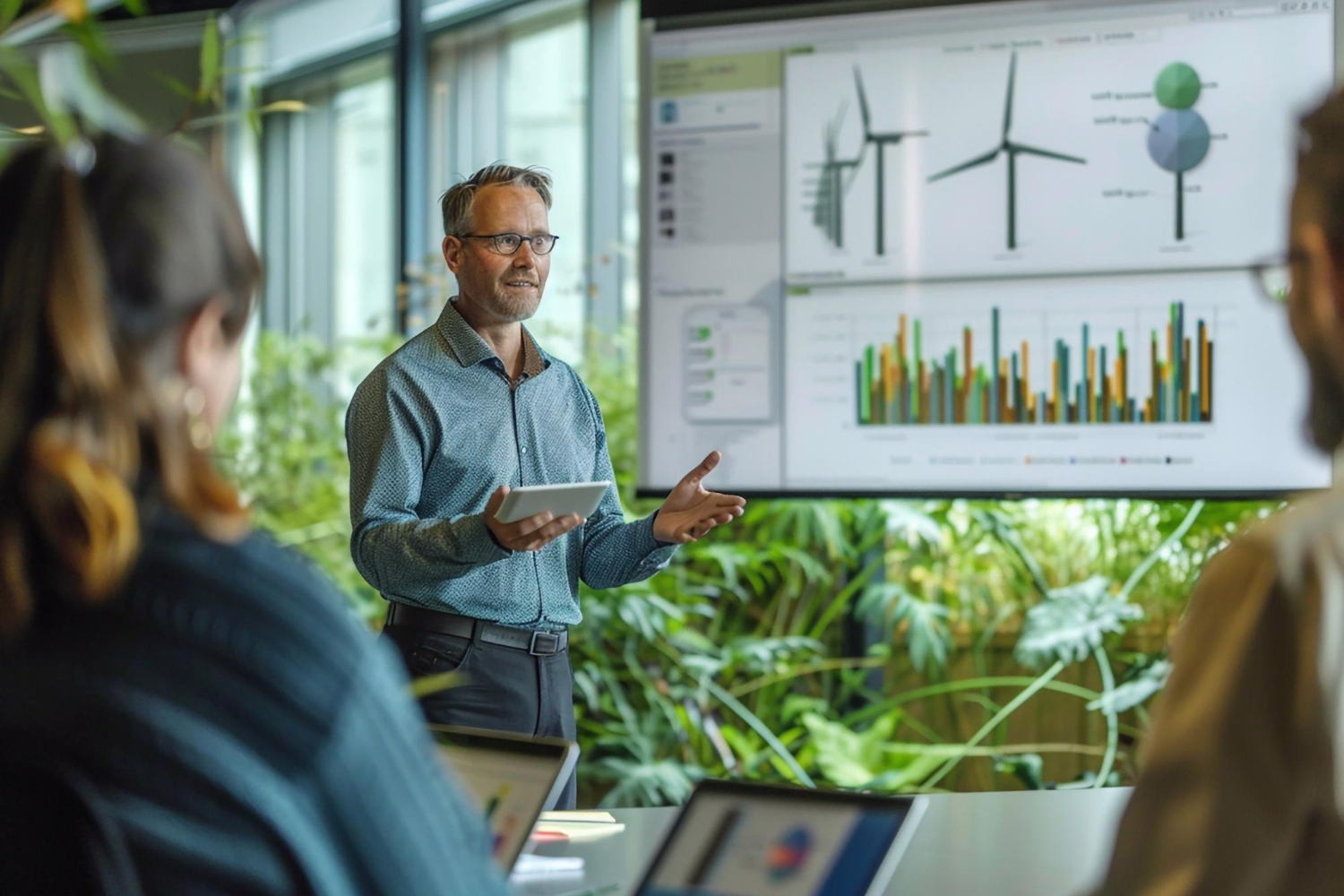As a business leader, I understand that change can be intimidating, and it can be easy to make excuses for why now may not be the right time to act on climate change. However, the truth is that now is the time for urgent action. For your business, yourself, your kids, and the world. If we don’t act now, the consequences for our planet and future generations will be catastrophic.
Here are five common arguments business leaders make as to why there is no time for acting on climate right now and why they don’t hold water.
“I’m too busy right now.”
It’s easy to argue that there are more pressing priorities, but the truth is that the impacts of climate change will affect every aspect of our lives and businesses. It already has implications in many ways today and it will only become more severe.
Time is the one resource we all have an equal amount of every day – 1.440 minutes to be precise. How you chose to prioritize them is your decision and what you make a priority is what you focus on (just think back to when the COVID pandemic resulted in lockdown and how your focus shifted and so did your actions).
Not engaging in the climate agenda have a significant impact already whether or not you recognize it. Countless reports, surveys etc. find that not acting leads to less satisfied staff which again leads to poorer performance, higher sick leave, more gossip, and less innovation – and higher turnover of staff.
Outside your organization, an ever-growing number of organizations expect or desire their suppliers to be part of solving the climate crisis. And with the upcoming CSRD from the EU (that means larger companies must report on the environmental performance of in standards equal to their financial reporting), chock waves will go down through the value chains. Are you ready to answer some detailed questions about sustainability in a satisfying way?
If you don’t prioritize addressing it, you will be forced to deal with even greater challenges in the future.
“I’m not ready yet.”
Some business leaders argue that they need more time to prepare or that they need to learn more before they can take action. The truth is, however, that we will never have all the information we need to address climate change. The issue is complex and multifaceted, and new research and data are constantly emerging. Waiting for the perfect solution or all the answers to be revealed will only worsen the problem. The longer we delay action, the more difficult and costly it will become to address the issue.
Additionally, many business leaders are under the impression that addressing climate change is going to be a costly burden on their operations, but in reality, taking action on climate change can actually lead to cost savings and new business opportunities. Investing in energy efficiency, renewable energy, and sustainable practices can reduce expenses, improve competitiveness, and open up new markets. Also, more and more consumers are becoming conscious of sustainability and are looking to buy from companies that align with their values.
Moreover, it’s important to note that not taking action on climate change comes with its own costs. Extreme weather events, natural disasters, longer droughts or persistent rainfall and other climate-related impacts constantly disrupt business operations, damage infrastructure and property, and harm communities. It is not a question of if it will hurt your business, only a matter of when and how hard. These costs can be significant and can far outweigh the costs of taking action.
It’s time to recognize that we cannot afford to wait any longer. We must take action with the knowledge and resources we have today and continue to learn and adapt as more information becomes available. By taking a proactive approach, you can not only help address the urgent issue of climate change but also create new opportunities for growth and success.
“I’m afraid of failing.”
It’s natural to fear the unknown and to worry about the potential risks of taking action. However, the biggest risk is not taking action at all. The longer we wait, the more difficult and costly it will be to address the problem. The only true failure is inaction.
The longer you wait to address climate change, the more difficult and rapid the changes will have to be made and thus the more costly it will be. The impacts of climate change are already being felt around the world, from extreme weather events and natural disasters to rising sea levels and food and water shortages. These impacts will only continue to grow and become more severe if we do not take action. The more people that experience the climate crisis on their own bodies, the more people will start to demand action for businesses. The deck is being stacked against those that do not take action.
It’s also worth noting that many business leaders may have misconceptions about what taking action on climate change entails. They may think that addressing climate change means making significant sacrifices or overhauling entire operations. But in reality, there are many ways where the changes will benefit your business and make your organization run more smoothly.
Finally, remember that failure is a natural part of any process of change and growth. You should not be discouraged by setbacks or challenges. Instead, see them as opportunities to learn and improve. The important thing is to take action, to keep moving forward and to be willing to adapt and learn as the situation evolves.
“I’m comfortable where I am.”
It can be tempting to stick with what we know, but continuing business as usual is no longer an option. The status quo is no longer sustainable, and the longer you wait the higher risk you put on your company.
The reality is that the status quo is no longer sustainable. We often tend to forget to look at the cost of in-action when we say it is too costly to act. You should ask yourself how much longer will my clients accept that I stick to the old way of doing things? Are we already seeing signs of a change in their criteria’s for whom they chose to work with?
It can be hard to see (and even more because you are looking for signs you don’t want to see) the early signs amongst existing clients as they have built up a preference for working with you and thus will tolerate more than what do they when they onboard new suppliers and partners. Look at what they communicate. See if you can get access to other tenders they put out in the marketplace and screen for signs of new criteria’s. Look at job postings if they have some and see how they position themselves and the kind of competencies they are looking for. And above all – talk with your clients about climate and sustainability to understand where they are heading and how you could help them.
No matter what they tell you right now know this: Continuing with business as usual will put your company at a disadvantage in the long run. The world is moving towards a more sustainable future and companies that do not adapt risk being left behind. As more and more consumers become conscious of sustainability and demand products and services that align with their values, companies that do not take action stand to lose market share and revenue.
“It’s not the right time.”
However, some argue that the timing is not right to take action, citing other factors such as economic conditions, market fluctuations, or political uncertainty. But the truth is, there will never be a perfect time to act on climate change.
As business leaders, it is our responsibility to take action on climate change. The time for excuses is over. It’s time to take bold, decisive action to protect our planet and ensure a bright future for all. And in doing so, protect and develop your company.
Waiting for the “right time” to take action is a risky strategy. Climate change is an issue that is not going away, and the longer we wait, the more difficult and costly it will be to address the problem. Business leaders who delay action may find themselves playing catch-up with their competitors who have already taken steps to reduce their carbon footprint and become more sustainable.
Moreover, as business leaders, we are responsible for taking action on climate change. The time for excuses is over. It’s time to take bold, decisive action to protect our planet and ensure a bright future for all. Navigating uncertainty and making decisions in the face of ambiguity is an inherent part of leadership. By taking action now, you can not only help address the urgent issue of climate change but also create new opportunities for growth and success.
In conclusion, the argument that “it’s not the right time” to take action on climate change is no longer valid. We must take action now, even if it means navigating some uncertainty. Business leaders must recognize their responsibility to take bold and decisive action to protect the company with all it jobs, our planet and ensure a bright future for all.




